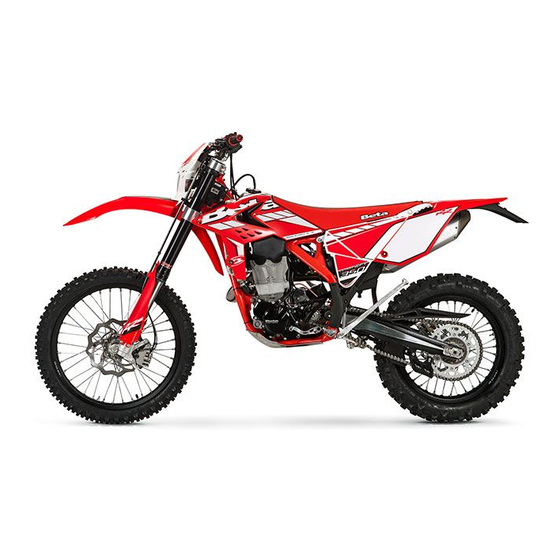
Table of Contents
Advertisement
RR 350-390-430-480 EFI
Thanks for you preference, and have a good time! This hand-
book contains the information you need to properly operate and
maintain your motorcycle.
The data, specifications and images shown in this manual does not constitute
an engagement on the part of BETAMOTOR S.p.A. BETAMOTOR reserves
the right to make any changes and improvements to its models at any mo-
ment and without notice.
Code 031440270 000
GB
1
Advertisement
Chapters
Table of Contents
Troubleshooting

















Need help?
Do you have a question about the RR 350 EFI and is the answer not in the manual?
Questions and answers